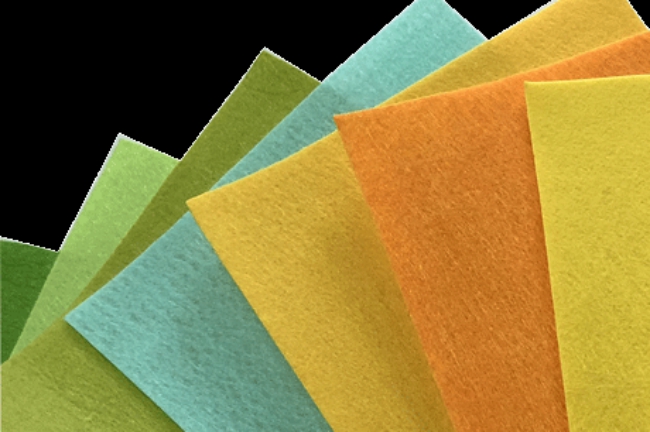Non-woven fabric is a new generation of environmentally friendly materials with the characteristics of water repellency, breathability, flexibility, non-combustibility, non-toxic, non-irritating, and rich colors. If the non-woven bag is placed outside and decomposed naturally, its longest life is only 90 days. If placed indoors, the bag will decompose within 8 years. When burned, it is non-toxic, tasteless, and has no residual substances, so it does not pollute the environment, so it is applied in many industries.
Non-woven fabrics are divided into the following categories according to their uses:
(1) Non-woven fabrics for clothing
Clothing, glove interlining, thermal padding material, underwear, outerwear, clothing label, shopping bag, clothing bag.
(2) Leather, non-woven fabric for shoemaking
Inner lining, fabric, base cloth, middle pad material.
(3) Home decoration, home non-woven fabric
Carpets and base fabrics, wall-mounted materials, furniture decoration, furniture package materials, dust-proof cloth, spring wrap, isolation cloth, audio cloth, bedding and curtains, curtains, other decorations, wipes, wet and dry bright cloth, filter cloth, Apron, cleaning bag, ironing felt, cushion, sleeping bag, rain cloth, tent.

(4) Non-woven fabrics for medical and health use
Clinical supplies, sterile isolation gowns, hats, shoe covers, dressing cloths, bandages, wet towels, cotton balls, masks, face masks, curtains, mattresses, sheets. Disinfection blood filter, sterilization cloth, sanitary napkins, diapers, vacuum cleaner bags, tea bags, coffee bags, travel underwear, incontinence products, wet and dry wipes, toilet paper, lens cleaning paper, soft pads, other medical and health materials.
(5) Construction, civil engineering, water use non-woven fabric
Geotextile, asphalt subgrade, highway, railway subgrade, soil reinforcement, drainage, river dam, golf course, tennis court cloth, artificial lawn, anti-soil deposition and erosion, anti-silt, building waterproof material, insulating cloth, sound-absorbing material, tent, Piping cloth, other building materials.
(6) Non-woven fabric for filter material
(7) Non-woven fabrics for industrial use
Coated cloth, polishing material, wipe cloth, sterile clothing, abrasive products, cable covering cloth, battery diaphragm, plastic reinforcement cloth, tape, protective clothing, laboratory clothing, absorbent material, lubricating pad, flame retardant cloth, conveyor belt, Use disposable felt.
The following non-woven fabric manufacturers recommend several non-woven fabrics commonly used in life.
1. SMS non-woven fabric
SMS non-woven fabric is a composite non-woven fabric, which is a composite product of spun-bond and melt-blown. It has the characteristics of high strength, good filtering performance, no adhesive, and non-toxic. At present, it is mainly used in medical and health labor protection products such as surgical gowns, surgical caps, protective clothing, hand washing clothes, handbags, etc. The raw material of the cloth is polypropylene, and the texture of the cloth surface is sesame.
2. Meltblown non-woven fabric
Meltblown nonwoven fabrics use polypropylene as the main material, and the fiber diameter can reach 1~5 microns. These ultrafine fibers with unique capillary structure increase the number and surface area of fibers per unit area so that the melt-blown cloth has a good filtration It can be used in the fields of air, liquid filter materials, isolation materials, absorption materials, mask materials, thermal insulation materials and wipe cloths. Meltblown can be used in ordinary, BFE95, BFE99, VFE95, FFP1, FFP2 levels to meet the needs of our customers.